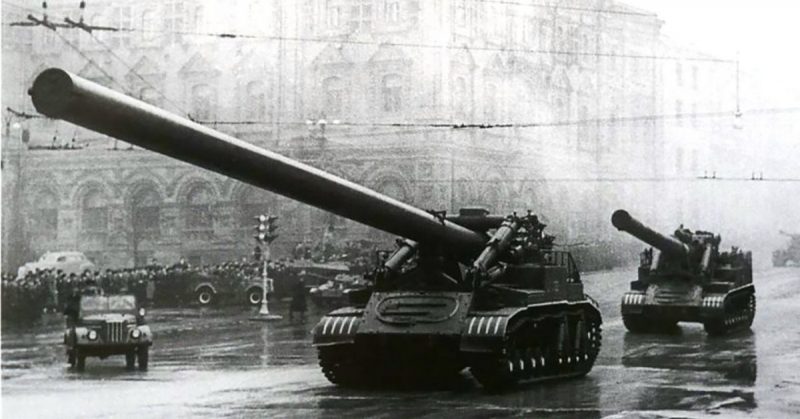The Cold War pushed the Soviet defense industry to create unique weapons. In the spring of 1953, at the military training ground in Nevada, the Americans conducted the first tests of the T-131 gun “Atomic Annie”. During the test, an American gun fired a 280 mm round of ammunition. Its flight lasted for 25 seconds. Work on such weapons was conducted for several years. At that, time there was no way for the Soviets to respond.
In November 1955, the Council of Ministers of the Soviet Union developed a secret decree. According to this decree, Kolomna and Kirov machine-building plants were instructed to create two types of artillery: the “Condensator-2P” gun and the 2B1 “Oka” mortar. The development was completely secret.
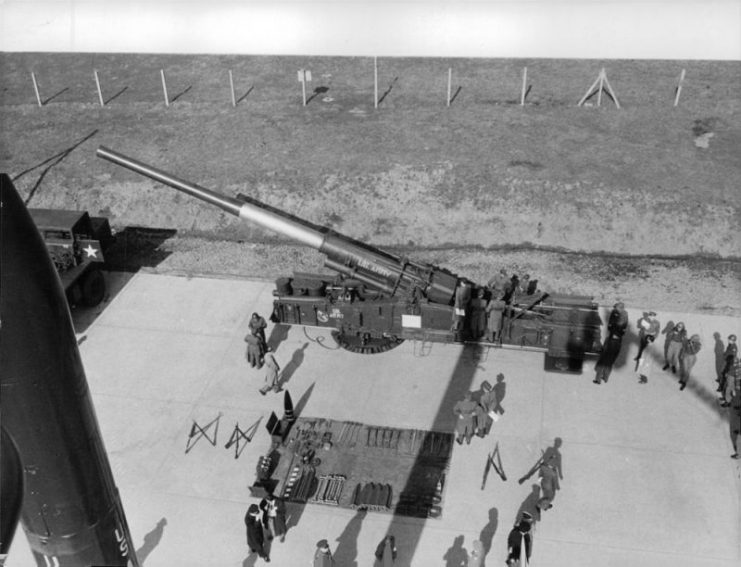
The engineers were tasked to create a mortar that could fire a physical body (nuclear projectile) weighing 750 kilograms at a distance of up to 45 kilometers. In addition, the mortar needed to have the reliability to continue operating for a large number of rounds. However, under the conditions of a tactical nuclear war, this weapon would not have required more than one shot.
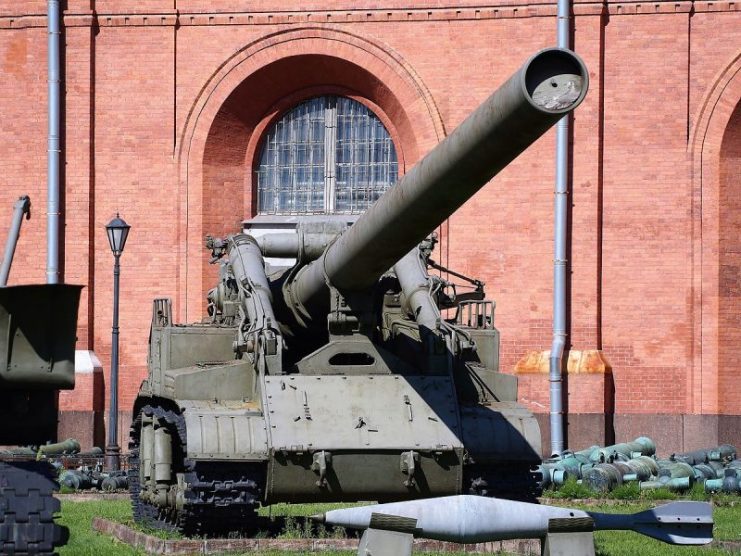
Among other things, mobility was a prerequisite. The creation of the chassis was begun at the Kirov plant, which had a lot of experience in creating unique tracked equipment. The basis for the massive mortar 2B1 “Oka” was the most powerful at that time, the IS-5 tank, which was also used for the IS-10 and T-10.
The heart of the vehicle was a diesel engine with a turbo and V-12-6B with 750 hp. The specific power for each ton was almost 12 horsepower. However, due to the high load of 55 tons, even this powerful engine was very limited, providing a range of only about 125 miles.
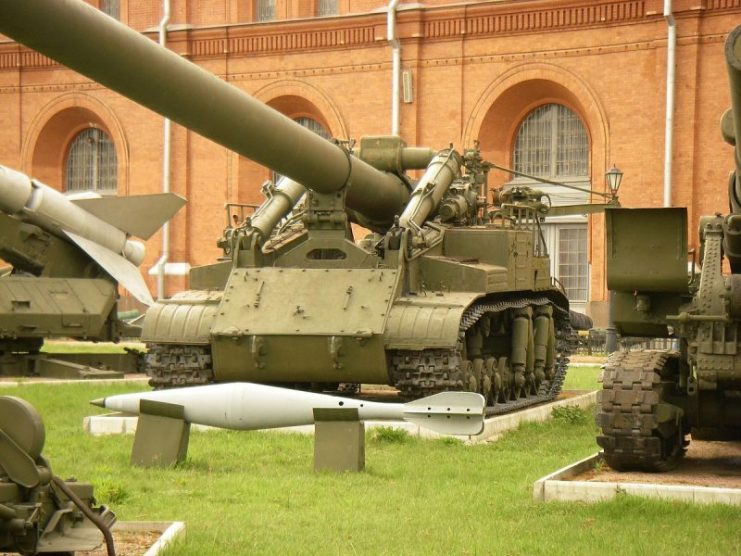
For the development of both the “Condenser -2P” and the “Oka” Mortar, a unified chassis was planned. This was due to Soviet standardization and the lack of more powerful engines and running gear. Supports were equipped with exclusive torsional shock absorbers.
The 2B1 “Oka” mortar with its 20-meter long 420mm gun was an impressive sight. Charging of the gun was carried out from a side breech. All devices intended to handle the recoil energy after the shot had very limited suitability. The hull and undercarriage played the role of the kickback dampener. The rate of fire of the gun according to technical specifications was 12 shots per hour.
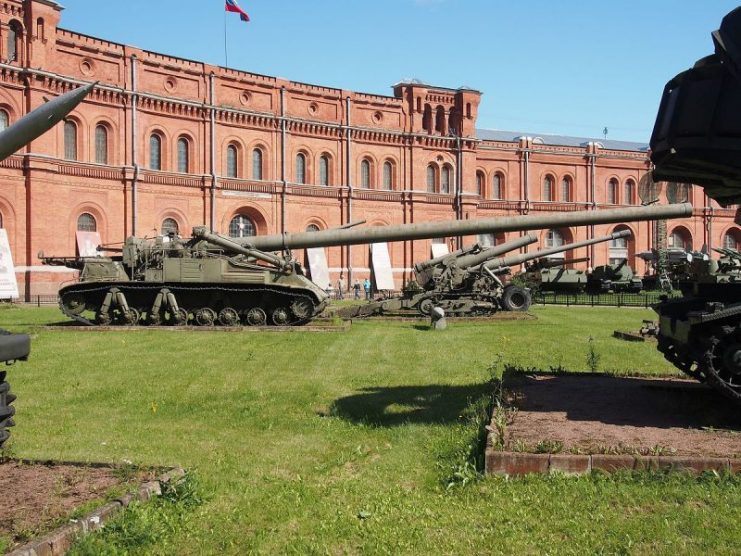
In 1957, after passing all tests, the 2B1 “Oka” mortar took part in a parade in honor of the anniversary of the October Revolution on Red Square. However, in the course of the actual tests, many systemic defects were identified, but their presence was concealed.
In total, four self-propelled 2B1 Oka mortars were assembled at the Kirov plant. During a demonstration, only one person, a driver-mechanic, drove the mortar. The rest of the crew of six followed him in an armored personnel carrier or another vehicle.
At the parade on Red Square, there were journalists, correspondents of foreign newspapers and magazines. Demonstration of a huge nuclear mortar made a real sensation among many people present. However, some foreign journalists came forward with the assumption that this artillery installation was a sham, designed to create an awesome effect only.
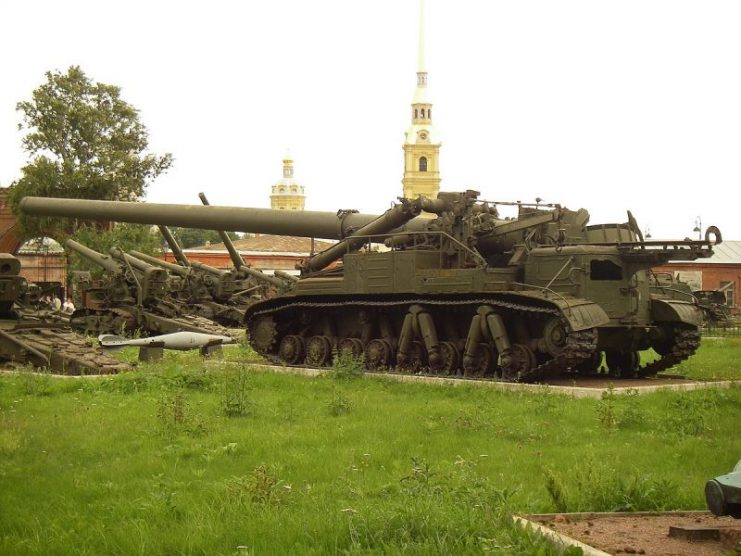
In reality, the 420-mm Oka self-propelled mortar produced many test shots, but was not ready for use in real combat. The massive weight had a negative impact on driving performance. Engineers for a long time could not eliminate the main problems in the running gear. Three years after the demonstration in Red Square on the order of the Council of Ministers, the 4 prototypes of 2B1 Oka were removed from service.
In addition, tactical missile carriers had progressed in development and had excellent characteristics. In comparison, the mortar was very expensive. The combination of these factors contributed to the “Oka,” being eliminated as a practical weapon and it would only go on to fill the ranks of military curiosities. Currently, the 2B1 mortar “Oka” is located in the artillery museum in the city of St. Petersburg.
